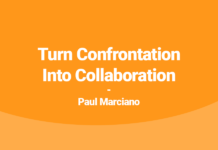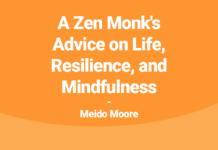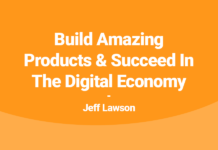Erica Dhawan was named by Thinkers50 as “The Oprah of Management Ideas”, is the Founder & CEO of Cotential and the author of Get Big Things Done: The Power of Connectional Intelligence.
Audio Player
Transcript:
Kevin Kruse: Today I speak to our guest about the difference between networking and connectional intelligence and is connectional intelligence the next EQ and why my 27,000 LinkedIn connections might actually be a bad thing. Before our guest comes on, here's our quote of the day from Robert Kiyosaki, “The richest people in the world look for and build networks. Everyone else looks for work.” Our guest today was named by Thinkers50 as the Oprah Of Management Ideas, and she's been featured as one of the emerging management thinkers most likely to shape the future of business. She speaks on global stages, including the World Economic Forum at Davos. She also writes for Harvard Business Review, Forbes, Fast Company. She's the founder and CEO of Cotential, and her book is Get Big Things Done, The Power Of Connectional Intelligence. Our guest is Erica Dhawan. Erica, welcome to the show.
Erica Dhawan: Thanks Kevin. Great to be here.
Kruse: Excited to talk to you. I mentioned in the bio your new book is Get Big Things Done, The Power of connectional Intelligence. So what the heck is connectional intelligence and how's it different from what I might have referred to as networking back in the day?
Dhawan: Great question Kevin. So a lot of the ways that we measure relationships, especially in our digital connected world, is through quantity of connections. How many LinkedIn followers do we have, how many twitter followers, how many email subscribers? But in my book Get Big Things Done, I really shift that notion from the importance of quantity to quality because having a lot of networks doesn't necessarily lead to measurable change. The key is the skill of how do you effectively leverage the networks of people, ideas and resources to drive change and value is what makes or break success, and I call that skill connectional intelligence.
If you think about today's world, we are not just connected, we are overconnected. We have too many meetings, too many emails. Connectional intelligence is that ability to take back our time, to think more strategically about how we can bring curiosity, community, building courage to our networks and often leverage the networks that we already have in new and unprecedented ways and think about how to multiply our connections in a very different way broader. So much of the networking conversation has been around build contacts, send followup emails, send a reminder of an article where you thought of someone.
And yes, those are very practical productivity tools. But I would encourage people to think about connectional intelligence really as the next leadership skill after emotional intelligence. We all know what IQ is. 15 years ago emotional intelligence came to stage as a key leadership trait, but in today's world, we can't just rely on our knowledge or our emotional connection with others when most of the time we're leading global, virtual, multigenerational team spread around the world. We need to tap into that ability to connect differently and connect intelligently.
Kruse: So are you hoping we refer to this as CQ in the future?
Dhawan: It's called CXQ, and the goal is that it took 20 years for emotional intelligence to really become mainstream and the goal is that our teams and our everyday conversations will have connectional intelligence involved just as much from communities to corporations to families because that's what we really need and that's what matters now
Kruse: I am discovering this just now in my own life because for work reasons and a forthcoming book I'm needing to sort of think about who my allies are and reach out to them and ask for help. And four years ago one of the ways I would have done that is I would have gone onto LinkedIn and I would have sort of just looked at my first level connections and it'd be pretty easy to spot my friends and to reach out to them. But today I have 27,000 LinkedIn connections, not followers, connections.
What's happened is if I log into LinkedIn, the stream is just jibberish from people I don't know and promotional and the messages are spam. It's very difficult for a valid important message to get through to me now on LinkedIn and I can no longer go to my first line connections on a platform like LinkedIn and say, hey, remind me like my closest 100 or 200 friends that I want to invite to this thing or do whatever, I can't find them. And so I'm now pausing and trying to really think like, wait a minute, I kind of messed this up. I went for scale but at a certain point it's now hurting me rather than helping me.
Dhawan: The reality today is that our scale depth and breadth of our connection has allowed for us to connect with more people, but it's made it much more difficult to really harness the intelligence of the people that we're connected to. And so in my book, Get Big Things Done with my coauthor Saj-nicole Joni, we actually talk about how do we really connect intelligently. And 10 years ago, Malcolm Gladwell, the famous author coined the concept of a connector and that idea revolutionized a lot of thinking in corporate America. But in today's world, I'd argue we're all connectors, we're over connected.
So does it matter if you're a connector, it's about how do you connect intelligently. And what we found is that people that had high connectional intelligence were able to leverage and understand and identify three different types of connectors in their network. The first type are the thinkers, the second type are the enablers, and the third type are the connection executor's. So let me explain. The thinkers are the people that help you generate big ideas. These are people with high curiosity, they are the devil's advocate. People that can bring that new perspective in.
They're the person you call when you're crafting your next book, Kevin, right? The enablers are people that are, think of them as the more traditional networkers, the community builders. They know all the right people. Once you have the big ideas or the strategy frames, who do I need to bring together? They might be running LinkedIn groups or Facebook groups or annual or monthly dinners in your community. And then the third type are the connection executor's. These are the people that really are good at mobilizing. Once you have a team, you have an idea and you're set into action.
They're very operational, they're very task detail oriented. And so one of the things we often do is we think, “Okay, I need to get this done, who can I leverage?” But we don't effectively really think about what are the skills that exist across my network and am I making sure that I'm tapping the intelligence of skills that I really need. Oftentimes we find thinkers spend all their time with other thinkers and often have a bias to have lots of thinkers in their network instead of really cultivating and building out those executor's or enablers that can help them forge and take their ideas to a new place or get them done in a quicker, better way.
And vice versa, you'll find enablers having lots of meetings together but not really getting much done. And so as you think about all of the different connections you have, what's really important now is to take a step back and really answer what am I trying to achieve? What stage am I am? What skills do I need? And then really go into tapping the people that matter most. Because what I find is we often overuse, we call them the same 10 people, STP, over and over again instead of really being intelligent about tapping into all of the capabilities of our network in the right way at the right time.
Kruse: I probably am more of the thinker myself and I would bet like generally attracts like and I would bet that the people I've contacted the most frequently last year would be fellow thinkers. And it really means there's a lot of opportunity to engage with others who I probably haven't engaged with.
Dhawan: Absolutely. One of the exercises I always recommend that anyone do whether they're launching a new project or they're trying to get something big done is to write down what it is that you're trying to get done in the middle and just visually network map out. So don't go to LinkedIn, go to your head because that's what you really use as your go to people and draw out who could you leverage for this? Who are you currently leveraging? Who could you leverage? And then begin to identify a few things. Who's a strong tie in this network and who's a weak tie? First we write down all our strong ties, but we don't forget about many of those weak ties that are willing to contribute but haven't been engaged or included in the right way.
Then begin to analyze how frequently am I engaging with these people. So we might find there's the daily conversations or the weekly conversations with people close to us or in our office or nearby, whether that's in a social media group or beyond versus others that we may only talk to annually. And then the last thing is to actually do your own version of diagnosis on who's a thinker, who's an enabler and who's an executer on my map and am I really leveraging the diversity of strengths of my network and not over utilizing people I just happen to be around more.
Am I thinking differently about how to tap some of my more medium or weaker ties around this big thing. The simple act of that, and it just takes a few minutes, can help you understand I don't even have the right people for this. Then you might be trying to go check out your LinkedIn network or your Facebook network. But just starting there really reduces the anxiety and overwhelm that many of us are facing today.
Kruse: Many listeners of the LEADx leadership show are younger frontline first time managers. Is there anything specific that you would suggest they do to build their connectional intelligence?
Dhawan: A couple of things. So the first thing I talk about in the book as well is identifying what you want to become known for. So in order to really build a network, you have to think about how you're going to contribute to that network. Yes, you can be a generous person who wants to give tips about restaurants or help people out by reading their application or whatever it may be. But to really build an intelligent network, you need to think about what do you want to be known for? Do you want to be known as a connector around robotics? Do you want to be known as a leading thinker in radiology? Do you want to be known as a management expert?
And then really begin to map out how you can contribute to your current network that cares about those things. And then do an exercise that I call your dream network and identify who are those potential 20 connections that you could build and what are unique ways that you can help serve their interests and contribute to something they're doing that they don't already have. And we think that we don't have anything to offer, but it could be as simple as helping to promote something they're doing, helping to offer something meaningful, organizing a way for people in your industry or around your passion area to come together.
One of my favorite examples of this is a woman named Jeannie Peeper. Jeannie suffered from a very rare disease called FOP and for 20 years she scoured from doctor to doctor on how to diagnose this illness. She met one doctor in her lifetime that has seen 18 patients who had this disease. And to give you a sense, there were only two research papers in the entire 20th century of this disease, so people didn't know how to diagnose it. She wrote letters to all of them. She started an email newsletter. For the first time ever people with the same disease could talk to one another and figure out commonalities. It became annual barbecues, it became a Facebook group.
Today that Facebook network, and it's now an association, is the first ever knowledge network for doctors and medical researchers to diagnose this illness and identify common symptoms, and this rare disease network has now funded the first ever medical research at a university for this disease. So had it not been for Jeannie to be curious to take a risk to say, “I care about this, but I'm not going to stop getting myself treated. I'm going to build a network that can do something about it.” And it started as an emotional support group, but then they really realized what other problems could be solved when connected and asking ourselves how could we create greater value? That's really where the power of connectional intelligence came into effect.
Kruse: That's an amazing story and a great case. She didn't realize where these connections were going to go and yet look what it became and the difference it's making.
Dhawan: Yeah. And so for anyone that wants to get a big thing done, whatever it is. They're starting their career, they're growing their career, they're looking for a new role. It all starts with, what do I care about most? Leverage what's been done before. What's a new way I could contribute? How can I build a community around this? You don't have to have a multimillion dollar idea or have anybody or have a big network already. That's the thing. It's really about being curious and courageous enough to take a risk to do something different. There's a surfer, Ben Thompson who hated the sludge in the water when he was surfing and he was also an engineer.
So he combined his surfer and engineer hats and created something called Smartfin, which is a sensor that surfers put under their surfboards to track the salinity, acidity and temperature of the water and surfers just liked it. He ended up creating a partnership with climate change researchers because climate change researchers couldn't get data because often sensors would corrode in the water, but surfers were going in and out of the water. So they were able to get data in different ways and it was without even really realizing it, but staying focused on something he can contribute to he was able to connect these two networks that were never collaborating before.
Kruse: For a second you talked about getting data in different ways and I thought you almost said different waves and I was going to give you a high five for that pun. So Erica, tell us where can we find out more about your work and of course your new book.
Dhawan: So you can find out more about me at ericadhawan.com, that's the one stop destination where details about my book. There's a free two pager that will give you the highlight cliff notes version. You can check out my speaking topics and my training topics there to make connectional intelligence practical if you run a team. I also have a free assessment on the website. So if you sign up on my website, you will get access to a 20 question connectional intelligence assessment that will help you identify what type of connector you are. Are you a thinker, enabler or executer? And it's a great way to really have a self awareness exercise that allows you to begin to reflect on what style are you and how are you ensuring that you're really leveraging people with different collaboration styles as well. So I would encourage that and you can check out my book on Amazon, Get Big Things Done. My goal is to help you get big things done in business and in life.
Kruse: We will certainly put all of those links that you mentioned into the show notes and I always like to challenge our listeners to take action right away and I'm going to challenge them today to go to your website and to take that assessment. Erica, thanks for coming onto the LEADx show.
Dhawan: Thanks so much, Kevin. You're a great example of the power of connectional intelligence and action.
Kruse: Very nice of you to say, thank you.
- http://ericadhawan.com/ – Website
- Buy her book, Get Big Things Done: The Power of Connectional Intelligence
















